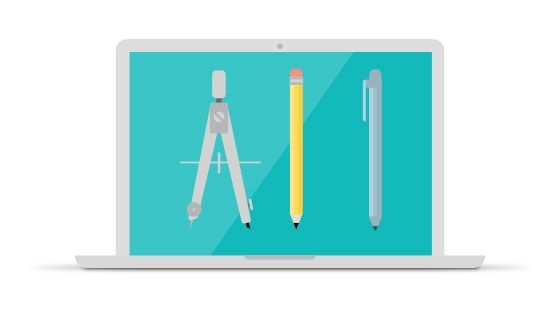
Welcome back to school.
Maybe you're just starting out? Or, you're at the end of your education? Either way, you've got a long and fulfilling road ahead. Here are a few survival tips that you'll do well to remember for your future career in design. 
Document everything.
Don't just save finished projects. Show your process, keep sketches, and use different ways to describe methods. Documentation creates content for your portfolio and helps clients understand how you've arrived at your solutions. More importantly, it ingrains your process, making you more confident at what you do. Take plenty of photos / screenshots of early iterations. Be mindful of the steps you’re taking and pay attention to what works and what doesn’t. Documentation will help you refine your design self.

Know the right tool for the job.
Abraham Maslow, the psychologist best known for creating the hierarchy of needs theory said, "I suppose it is tempting, if the only tool you have is a hammer, to treat everything as if it were a nail." By utilizing a range of tools and methods you can become a well honed instrument fit for tackling a variety of different challenges. Knowledge of the different ways of engaging a problem helps you choose the most effective method. Then and only then can you invent some impressive and clever little title for yourself like Graphical Web Pirate, or Digital Chromatic Strategist, or Champion of Apps, Graphics and Code, or Intergalactic UX Predator. You get the idea - don't make all your problems into nails just so you can use the hammer.

Test what you’re making and what you’ve made.
Never hand the client something without trying it many times and in many different ways. If it’s a graphic design piece or layout then make sure it’s shared and reviewed by many people. Even if you’re that baller creative wizard, you should still have someone else check what you’re doing because you might really suck at spelling or something. If it’s an application or product, make sure you check all those oddball scenarios that wouldn’t creep up during normal use cases.

Collaborate + Communicate
To be an effective designer means that your goal is to deliver a product which addresses the problems at hand in the best way possible. You're also going to want to do this on time and within a particular budget - an impossibility without strong communication and collaborative skills. This means attentively listening and talking to everyone a little differently and giving plenty of feedback at all times. Communicating transparently and positively with your team members and clients is an essential piece of a successful product launch.

Focus on your craftsmanship.
There is nothing like a well crafted product: it’s beautiful, thought out, detailed and functional. It’s important to strive to be creative and original, but remember that nothing is completely original. Make something that you really love and other people will likely love it too, and build it like a fine craftsman would - with an intense and attentive pride in your labor.